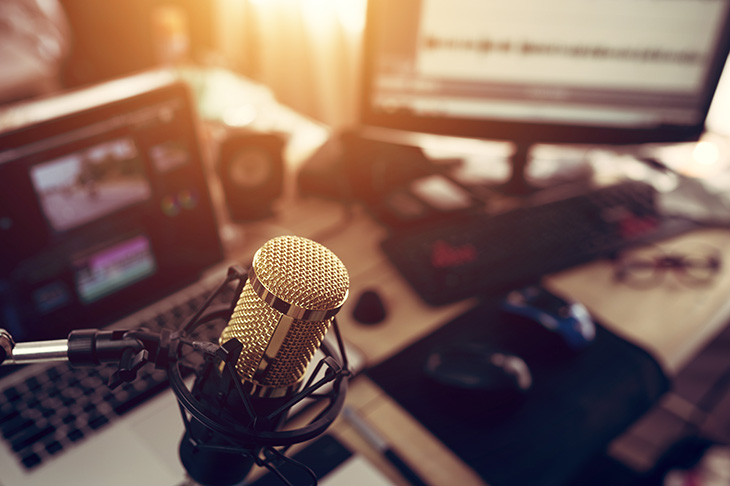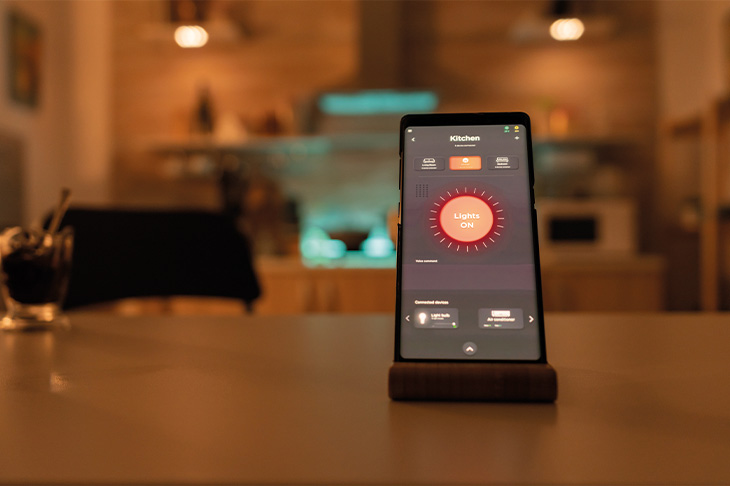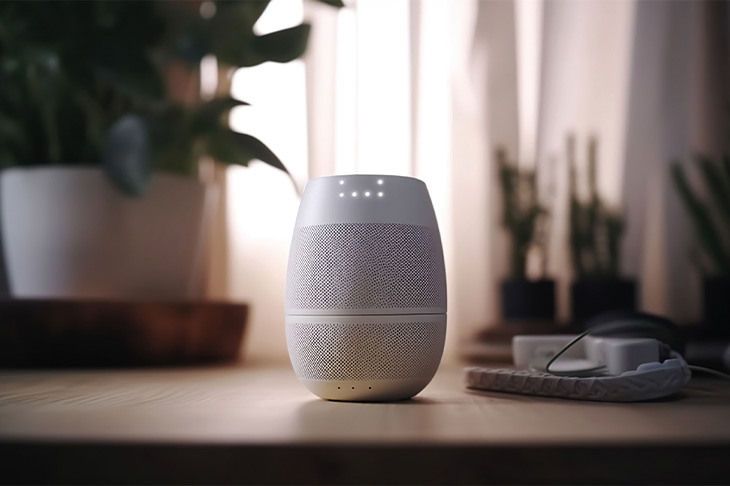- Digital Marketing
- Perspective
The future of audio in B2B: something worth hearing.
What have you listened to today? Chances are, you’ve had the radio on in the office or listened to a podcast on the train to work. Maybe you’ve got an audiobook to tide you over while you’re on the motorway.

Whatever you prefer, there’s no denying the prevalence of audio. It features almost daily for almost all of us in one way or another, with platforms such as Spotify, Audible and Apple Podcasts behemoths in the aural world. Even YouTube is taking its share of the audio-only market via the podcast industry – an industry that attracts 22% of global internet users. For advertisers, too, audio has proven fruitful, helping the latter amass a value of $4.9bn as recently as 2021.
So how do we ensure audio’s continuing success? It’s arguable that audio has already reached its peak as an industry – if it weren’t for the developments in tech that are already piquing a renewed interest in the audio biz. This is great news for advertisers, as long as the growing opportunities are made the most of – as has been done for just over a hundred years.

An addition to our airwaves.
It’s August 1922 in New York, and local radio station, WEAF, makes history by airing the first-ever radio advertisement. Head back across the Atlantic during the same year, and you’ll discover the formation of the BBC, which, by 1927, held complete monopoly over UK radio waves. It became illegal to broadcast as a third party during this time, resulting in innumerable offshore ‘pirate’ radio stations to satisfy consumer demand without breaking the law. This situation remained until 1973 when the fully independent LBC launched.
The success of (initially just) radio surely lies in its convenience. The beauty of audio entertainment is that it’s consumable while you complete other tasks, unlike other media. With the now long-ago advent of headphones and the subsequent birth of audiobooks, podcasts, playlists, and more, audio is ideal for enjoying while out and about – making it perfect for advertising.
Audio advertising has enabled the monetisation of listening platforms, which is precisely why in the last year, Google has allowed any advertiser to utilise audio (rather than restricting to specific brands and products, as has been done previously). The audience for these ads is not to be underestimated: in the past month alone, 79% of the US population has listened to audio online.

Easy listening.
Given the aforementioned convenience of audio, it’s no wonder that the popularity (and the technology) of voice activation has risen sharply in recent years. “It is estimated that by 2024, the global voice recognition market will reach $26.8 billion, and the number of voice-enabled digital assistants will reach 8 billion.” A voice-activated assistant combines already-convenient audio consumption with voice-activated technology that opens doors for interactivity between product and person, with the ability to do anything from ordering your shopping to telling you the weather.
Two-way communication is, at best, the gateway to further immersion and interactivity with the aural world. And this is pretty reasonable ‘at best’: the main hurdle is its usage beyond our homes. Alexa’s prevalence in households is clear, but it’s yet to be seen how Amazon can extend this convenience to the listening market on the move.
The key breakthrough so far is an innovation by AdTonos called YoursTruly, which essentially enables consumers to react and respond to audio adverts in real-time through smart technology – such as Alexa – at home. Converse to its nature – audio is a mass-broadcast medium, after all – Michal Marcinik, founder of AdTonos, argues that audio is an ‘engaging, one-to-one form of communication. It gives brands the opportunity to build a relationship with the listener’. It’s yet to be seen when and how other brands will follow, but YoursTruly has greenlighted this as an option, opening a door we didn’t even know existed just a couple of years ago.

What does the future hold for audio for B2B brands?
The nature of how we interact with audio is changing. It is a territory rife with opportunities for brand engagement and could be a vital facet of your digital and SEO strategies. When we consider that 46% of voice search users are enquiring about local businesses each day, it is integral to weave voice activation queries into SEO search terms. The first step is to consider the long-tail keywords you’re targeting and make sure you’re including those that are phrased as questions, as well as using more conversational language in the content you’re writing. Another opportunity comes in the form of audio ads across micro-influencer platforms within your specific sector. Unlike B2C audio advertisements, which can often feel like screaming into an echoey cave, B2B opportunities here are niche with smaller audiences, heightening the possibility of valuable brand exposure.
